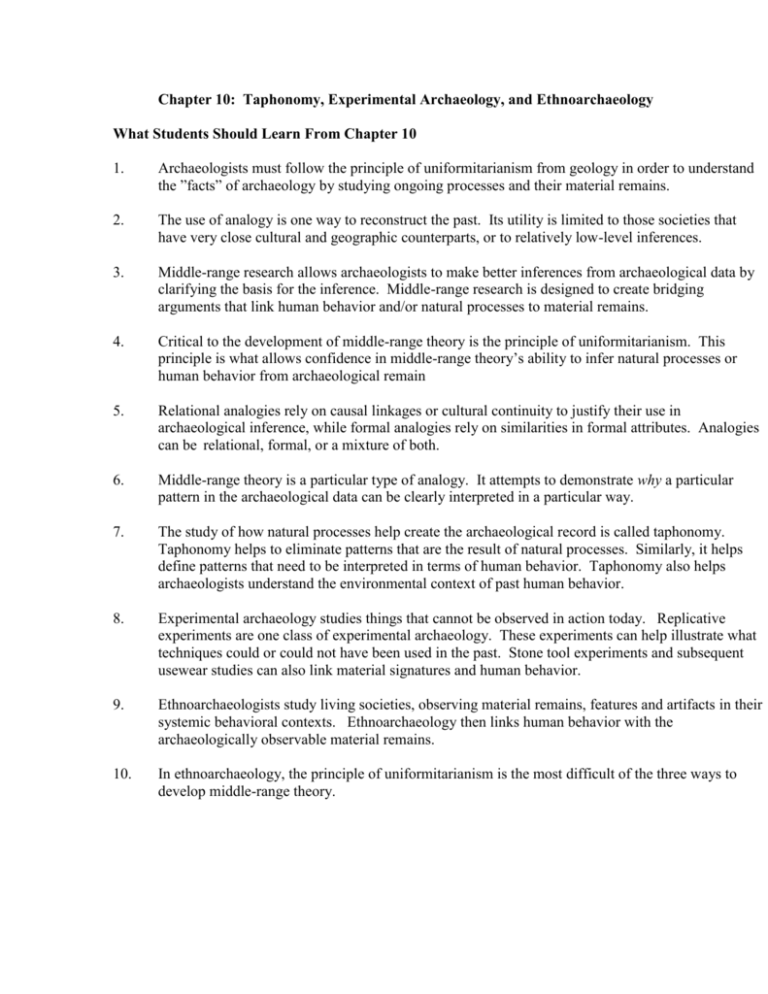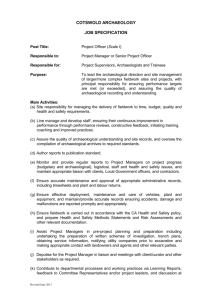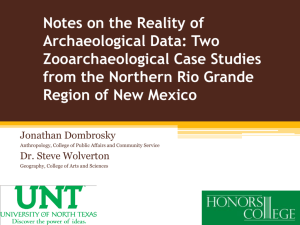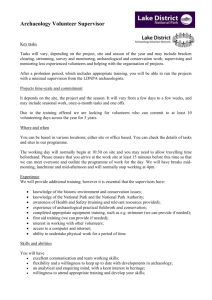Chapter 10 - Cengage Learning
advertisement

Chapter 10: Taphonomy, Experimental Archaeology, and Ethnoarchaeology What Students Should Learn From Chapter 10 1. Archaeologists must follow the principle of uniformitarianism from geology in order to understand the ”facts” of archaeology by studying ongoing processes and their material remains. 2. The use of analogy is one way to reconstruct the past. Its utility is limited to those societies that have very close cultural and geographic counterparts, or to relatively low-level inferences. 3. Middle-range research allows archaeologists to make better inferences from archaeological data by clarifying the basis for the inference. Middle-range research is designed to create bridging arguments that link human behavior and/or natural processes to material remains. 4. Critical to the development of middle-range theory is the principle of uniformitarianism. This principle is what allows confidence in middle-range theory’s ability to infer natural processes or human behavior from archaeological remain 5. Relational analogies rely on causal linkages or cultural continuity to justify their use in archaeological inference, while formal analogies rely on similarities in formal attributes. Analogies can be relational, formal, or a mixture of both. 6. Middle-range theory is a particular type of analogy. It attempts to demonstrate why a particular pattern in the archaeological data can be clearly interpreted in a particular way. 7. The study of how natural processes help create the archaeological record is called taphonomy. Taphonomy helps to eliminate patterns that are the result of natural processes. Similarly, it helps define patterns that need to be interpreted in terms of human behavior. Taphonomy also helps archaeologists understand the environmental context of past human behavior. 8. Experimental archaeology studies things that cannot be observed in action today. Replicative experiments are one class of experimental archaeology. These experiments can help illustrate what techniques could or could not have been used in the past. Stone tool experiments and subsequent usewear studies can also link material signatures and human behavior. 9. Ethnoarchaeologists study living societies, observing material remains, features and artifacts in their systemic behavioral contexts. Ethnoarchaeology then links human behavior with the archaeologically observable material remains. 10. In ethnoarchaeology, the principle of uniformitarianism is the most difficult of the three ways to develop middle-range theory.








